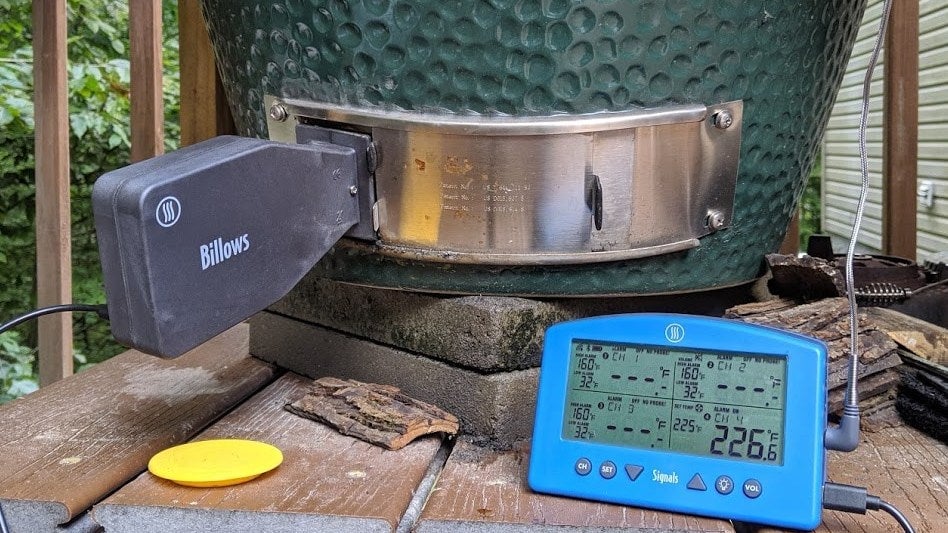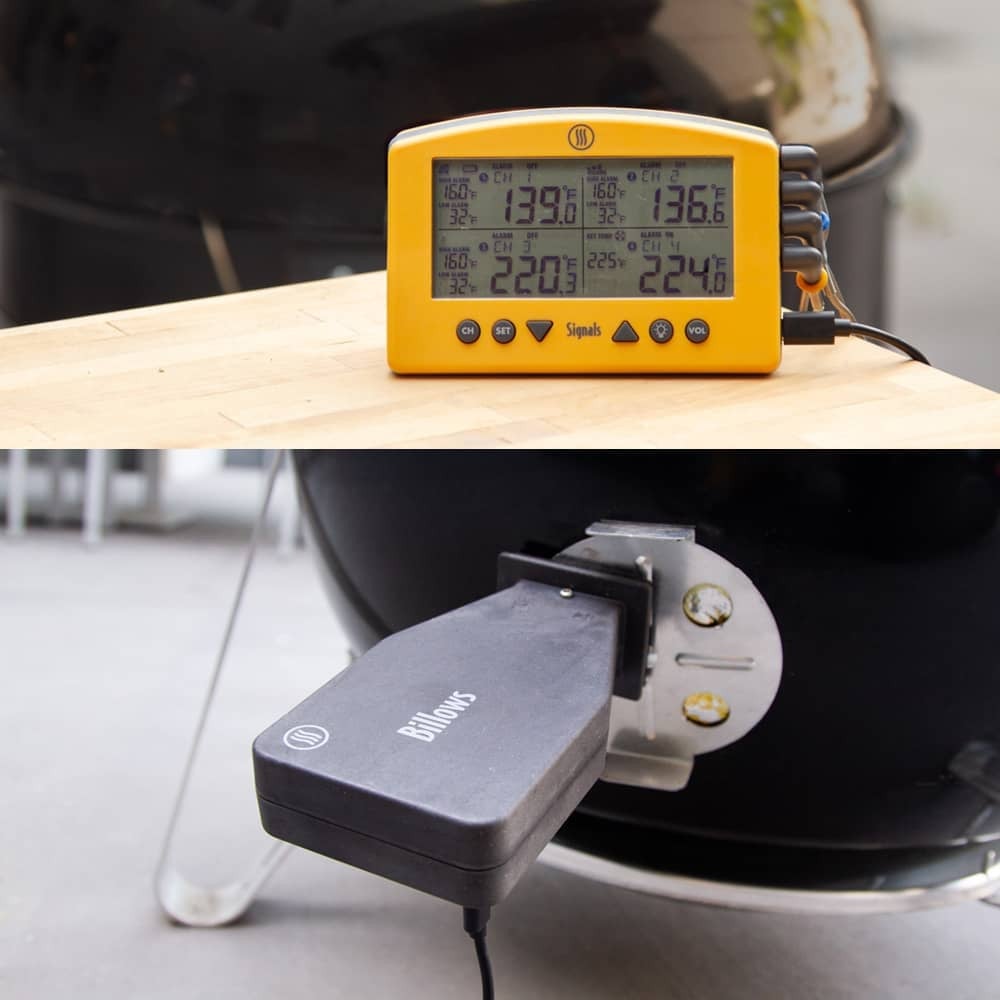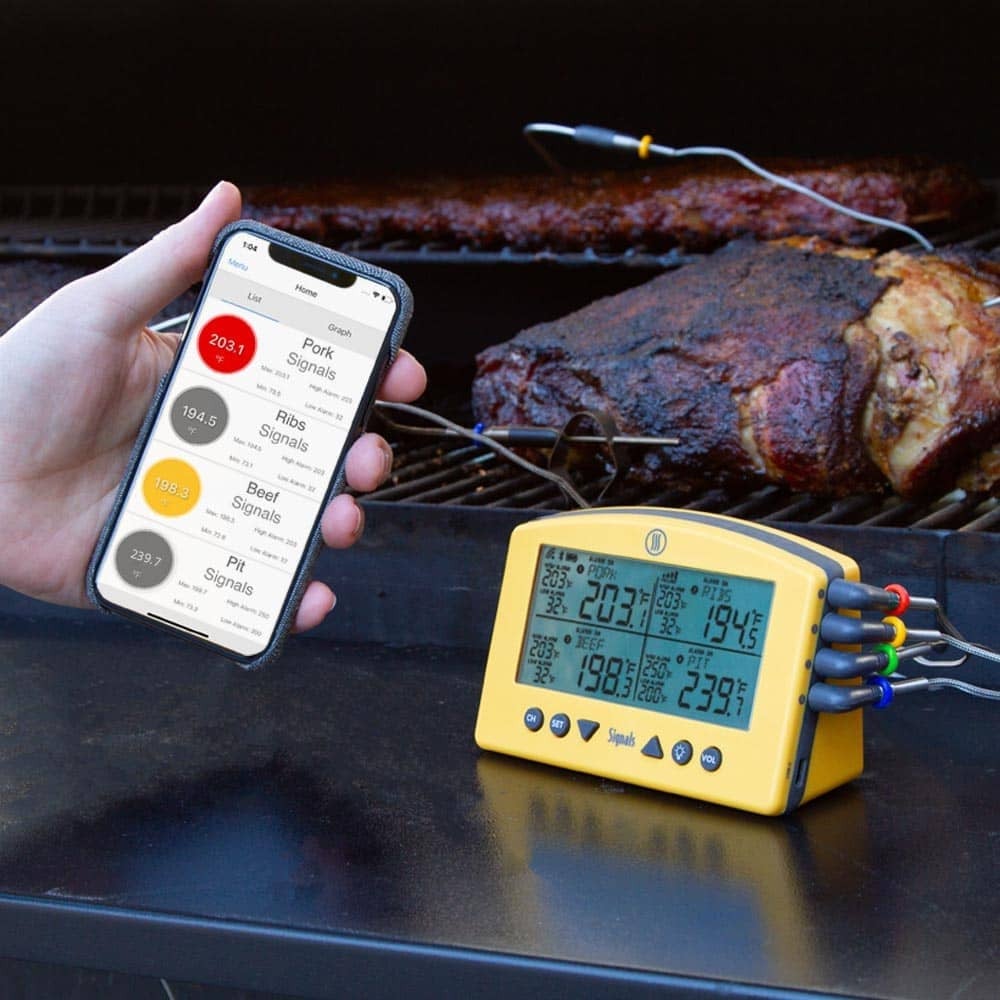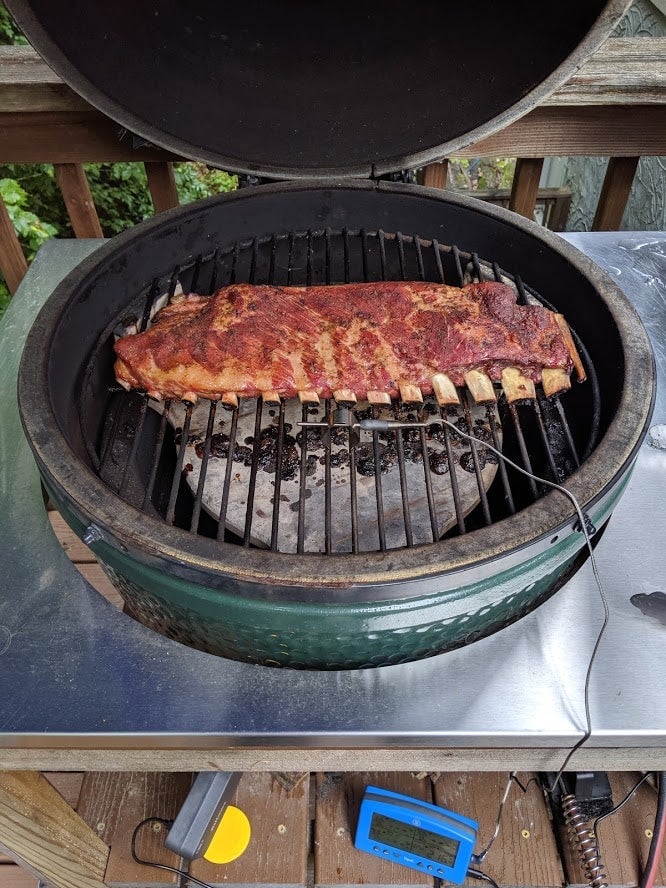ThermoWorks Billows and Signals will Turn Almost Any Grill, Smoker, Or Metal Bin Into a Precision Cooker
Using ThermoWorks’ Billows and Signals makes me rue the hours I’ve lost and the energy I’ve spent manually maintaining charcoal-fueled temperatures in my smoker.

Using ThermoWorks’ Billows and Signals makes me rue the hours I’ve lost and the energy I’ve spent manually maintaining charcoal-fueled temperatures in my smoker.
Suggested Reading
Companies like Traeger and Camp Chef have pioneered automated smoking with their auger-fed, temperature controlled pellet grills, and there’s no denying that they work well. These units are precisely controlled, near idiot-proof, and the meats they produce are excellent. Sadly, pellet grills are also expensive, one-trick ponies that require a constant supply of special wood pellets. That’s just not for everyone, especially when we can all buy excellent kettle grills and lump charcoal cheaply and conveniently almost anywhere.
Related Content
So what are we backyard cooks to do when we crave precise temperature control, without the constant fiddling with vents, charcoal, and wood? The answer lies in a ThermoWorks Billows controlled by a ThermoWorks Signals unit.

The concept is simple, but the technology is impressive: ThermoWorks utilizes their second-to-none temperature measurement tech to accurately control the supply of oxygen to your charcoal and/or wood. The Billows unit plugs into the vent of just about any rigid, fireproof vessel that can contain heat, and will increase or lower its fan speed on demand to maintain a cooking temperature within a desired 10 degree range. Try managing that level of precision on your own.

The catch is that the $59 Billows fan requires a separate controller system to monitor temps and control its fan speeds via USB-C, and currently, ThermoWorks Signals is the only such device. At $229, Signals is a real investment, but “Billows fan controller” is grossly underselling this Wi-Fi/Bluetooth/App-fortified temperature computer’s capabilities. With four channels and four ThermoWorks Pro-series temperature probes, the Signals will monitor your cook temperature and up to three meats out of the box. Buying additional Pro-series probes for your desired application lets Signals monitor any configuration of four pit / oven / fryer / boil / sous-vide / food temperatures. And if you aren’t around to look at the screen, its Bluetooth and Wi-Fi capabilities let you control everything from ThermoWorks’ polished Android or iOS app. Regardless of your station as a pit master pro or shade tree BBQ enthusiast, Signals could very well be the last remote probe thermometer you ever buy.
I’ve been using Billows and Signals for over a month. During that time, I’ve performed (at least) weekly cooks of various meats with the duo. I’m not often amazed with products enough to consider them a “buy it for life” candidate this early, but Billows and Signals hit all the marks. They’ve helped me produce some of the best ribs and brisket in all my years as a hobbyist BBQer. And they did it with minimal human attention.

Most surprising to me is that the pair performed just as well in unfamiliar territory as it did with my personal setup. With Billows and Signals added to the mix, the only difference between my Big Green Egg and my friend’s Weber kettle grill was fuel efficiency. Two near identical cuts of meat produced on very different cookers were indistinguishable from each other because of the precision temperature control over the course of an eight hour cook. We were both so impressed that we cut a 1" square hole and mounted Billows onto a rusty old metal trash. We then tossed in some charcoal, loosely fitted the lid (leaving a bit of a gap to vent) and set Billows to 225 degrees. Within a few minutes Billows was perfectly regulating the temperature.... of a garbage can.
Lately, when I’ve talked to my chef and backyard cookout enthusiast friends, I found myself likening Billows and Signals to the way an Instant Pot has changed how my family prepares “inside” meals. I’m simply able to produce better food consistently, and with a lot less effort. It takes a lot to make me change my BBQ routine, but Billows and Signals are going to be a regular part of my cooking arsenal going forward.
